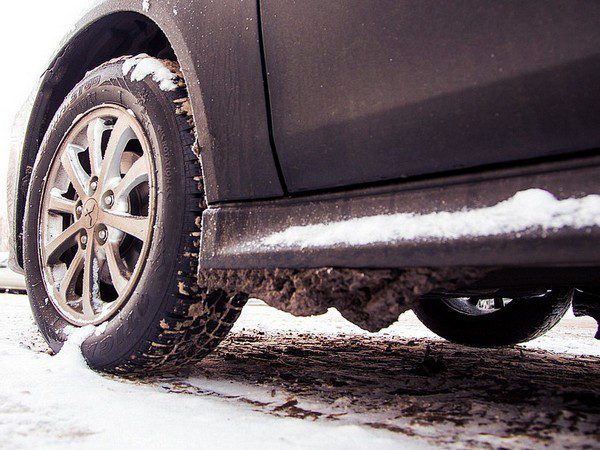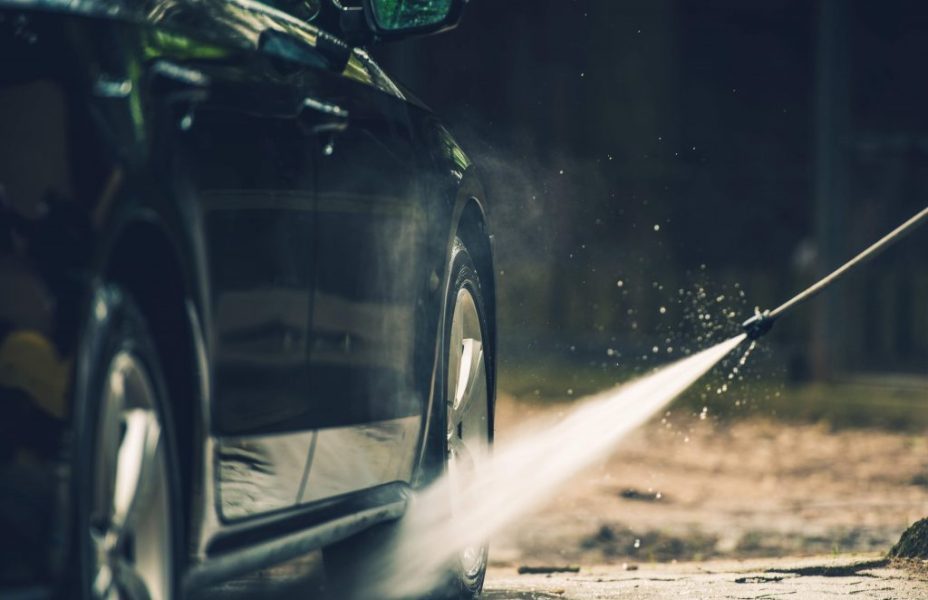
How to protect your car from road salt?
Content
Autumn is the best time to prepare your car for the upcoming frost and snow. And also the road salt that follows it. How to effectively protect the machine from harmful effects? Find out in our article!
What will you learn from this post?
- How to protect your car from road salt?
- How to prepare the chassis for winter?
- Why is it worth covering the car with clay and wax?
Shortly speaking
Road salt is corrosive to metals, both steel and aluminium. It's best to protect your car from it in the fall, before temperatures drop below 0 degrees Celsius. Thorough washing, smearing, and then applying wax will help, thanks to which the dirt will not stick so easily to the surface of the car body.

Why does road salt damage my car?
The salt commonly used for pavement is sodium chloride, known from the kitchen, fortified with anti-caking agents. Its task is to remove a dangerous layer of ice on the road and sidewalks. But when the outside temperature rises, salt mixed with dissolved ice or snow turns into caustic mud.
Sodium chloride is highly hygroscopic. Having settled in a car, maybe accelerate corrosion processes. It harms the steel body and chassis components, rims and even the electrical system. It is true that the hull is protected by lacquer and an anti-corrosive layer of zinc, but a small loss is enough for the salt to begin its work of destruction. By the way, what settles on the body of a car with slush - sand, small stones, dirt - will act as flaking on the paintwork, leaving scratches that are difficult to remove.
How to protect the car from salt?
The most important task for an owner who wants to protect their car from the damaging effects of road salt is to keep it clean. However, in winter, when it is cold outside and it is difficult to dry the car, this is difficult to do. The consequence of this is not only the formation of rust, but also the freezing of locks, cracking of seals and even the rupture of some elements, into the cavities of which water has entered.
Therefore, act before the onset of frost. In autumn, take care of replenishment of paint losses – it is there, among other things, that wet salt can accumulate, which will become a source of corrosion. To do this, you can use varnish chalk. How to do this, we suggested in an article on self-repair of car body defects.
However, first and foremost, focus on thoroughly washing and protecting the vehicle from excessive contamination.
Claying of a car body
Clay helps to remove dried, stuck-on dirt, such as grease stains or insect debris, from the paint surface. After application, the paint layer becomes smoother and therefore less susceptible to corrosion. Same clay cladding prepares the car body for the following proceduresprotects against the adhesion of dirt and road salt in winter.
This procedure should be performed before winter - at low temperatures, the clay hardens and can scratch the car body. Before coating the car, of course, should be thoroughly washed and dried.
We wrote in detail about the procedure in the text How to make a car with clay.
Car body waxing
Waxing is not only a way to make your car look nice and shiny, but also another way to protect your paintwork from salt and slush. Waxed surface repels dirtso the car remains clean and less prone to damage. You can choose from hard wax - very effective but difficult to use - and liquid wax (including those based on silicone).
We wrote about the details of the whole process in the text "How to wax a car".
Salt protection for chassis
The undercarriage in direct contact with the salt-laden road is particularly susceptible to corrosion. This is a good practice, especially in older car models that are not protected with galvanized sheets. service by special means, most often based on a bitumen-rubber mixture, which form a flexible screen against dirt and mechanical damage. Of course, the preparation can be applied to the elements of the undercarriage only after cleaning them from dirt and rusty deposits.
Washing and protecting rims
As already mentioned, it is not only the paintwork and chassis components that suffer from road salt. Oddly enough, this also negatively affects the rubber. After all, they are not only made of rubber! The accumulation of slush on the rims can damage not only the rims themselves, but also the tire wire, weakening it and reducing traction, and, as a result, the risk of complete breakdown.
Thanks to special varnishes, modern light-alloy wheels are salt-resistant, so riding on them in winter is possible, but requires more cleanliness. It is worth acquiring consumables for the care of aluminum alloys that can be used at low temperatures, and regularly clean the discs. The less complex (eg full of nooks and crannies where dirt can accumulate) the discs are, the easier it is to keep them clean.
What about traditional steel rims? Before replacing tires with winter tires, it is worth carefully cleaning them from rust and dirt with a metal brush or sandblasting in a service center. Then the cleaned surface should be coated with a special protective varnish.

Car wash in winter
If you decide to wash your car in winter, it is best to do so in a covered heated car wash or in your own warm garage. Begin by thoroughly rinsing the body and chassis to avoid scratching the components with sticky dirt particles. Let the machine run after washing dry wellBefore going on the road, the seals must be fixed with a special preparation based on silicone or technical petroleum jelly. Remember that winters are not always harsh, and lately frosts have been replaced by thaws. If you choose a day when the air temperature is above 0 degrees Celsius, the risk of damage to the car due to inaccurate drying is lower.
Don't want to worry about dirt and corrosion? Protect your car from the onset of winter. You will find the necessary medications and tools for maintenance. on avtotachki.com!
avtotachki.com,

